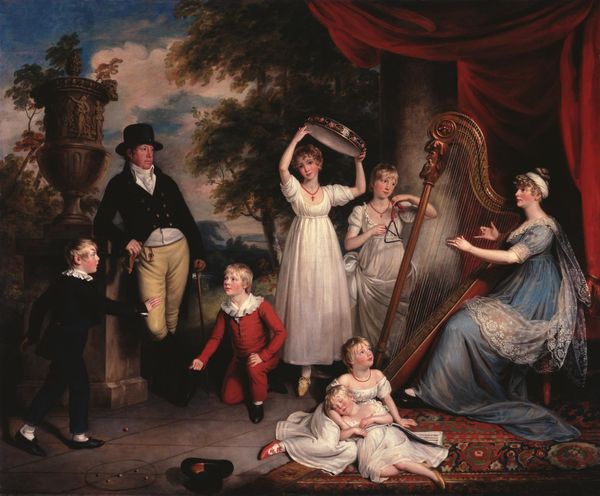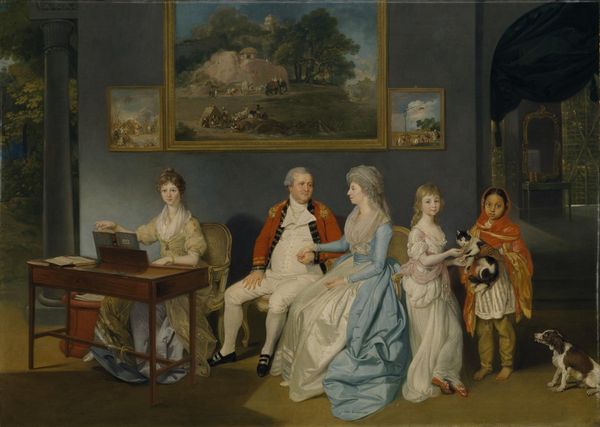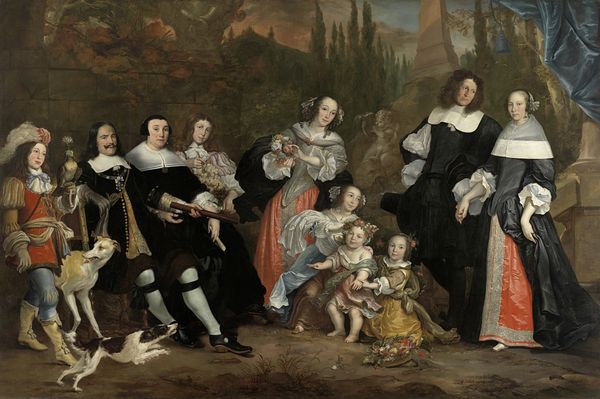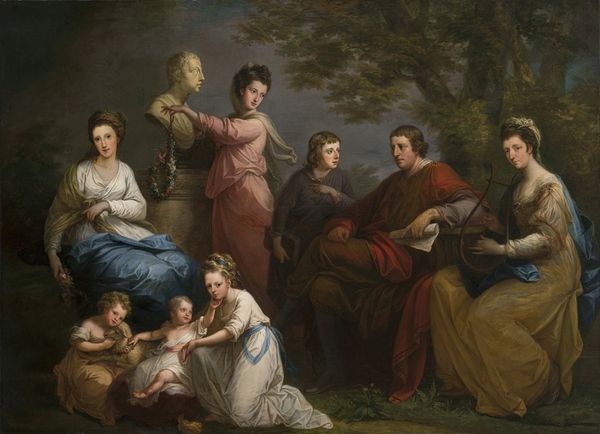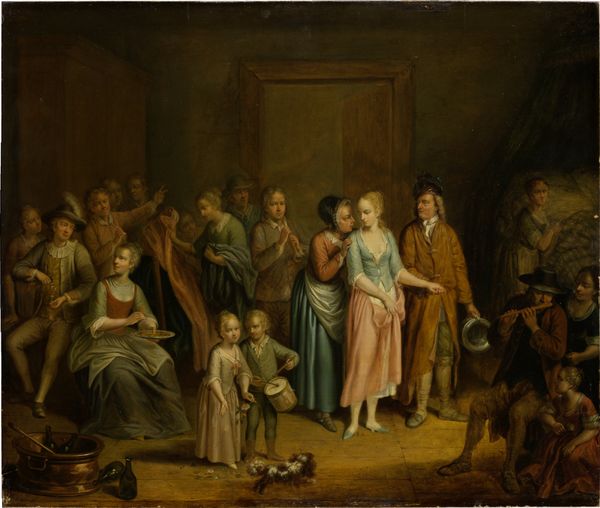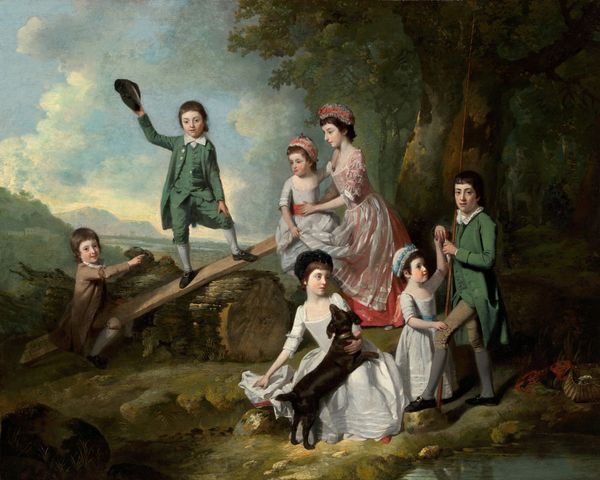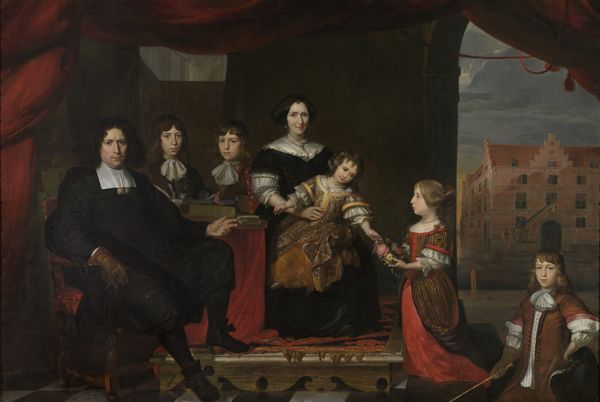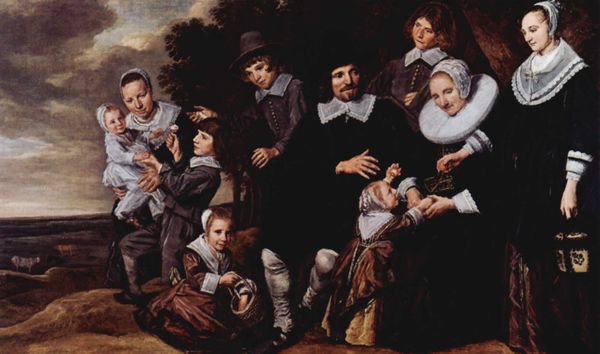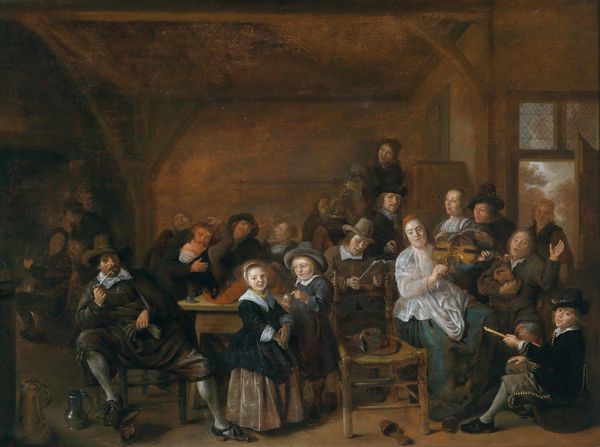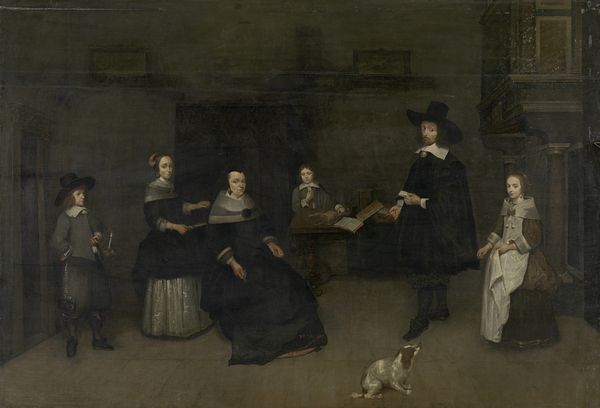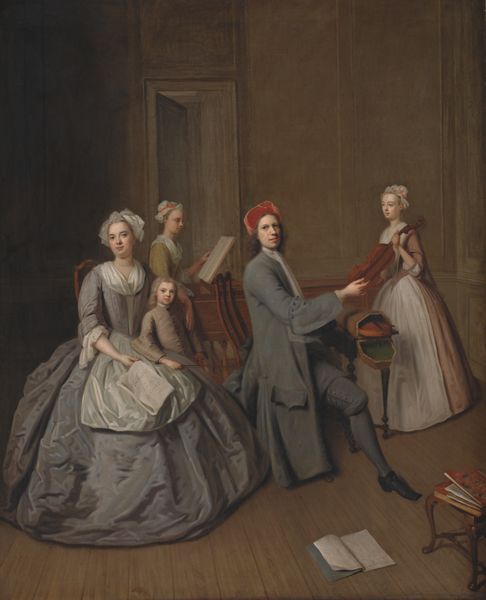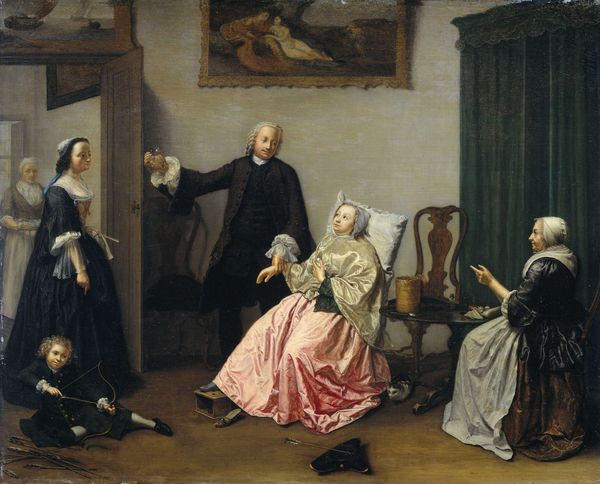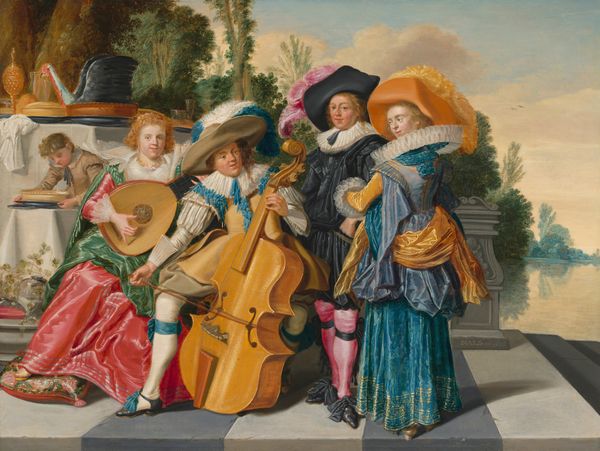
painting, oil-paint
#
portrait
#
baroque
#
dutch-golden-age
#
painting
#
oil-paint
#
group-portraits
#
genre-painting
Dimensions: height 190 cm, width 200 cm
Copyright: Rijks Museum: Open Domain
Curator: It’s striking how Abraham van den Tempel’s “David Leeuw with his Family,” created in 1671, captures an affluent Dutch family. What’s your immediate reaction to it? Editor: The arrangement of the family members, along with musical instruments and sheets, really conveys a sense of posed domesticity, reflecting the Dutch Golden Age’s emphasis on family virtue. It's more tableau than a slice of life. Curator: Precisely. Group portraits like this were less about candid moments and more about presenting a family's status, piety, and societal contributions through symbolic language. Notice the dog, for instance, usually a sign of fidelity. Editor: Yes, and the setting seems staged to convey status: The garden setting, for example, offers a constructed backdrop. We can feel the increasing importance of merchant families wanting to represent themselves as cultured and educated. Curator: And note the music-making. It was understood to symbolize harmony within the family and cultivation. Each member’s placement and attire further signal social roles. The Steen family were cloth merchants, if memory serves. Editor: Certainly, this depiction tells us a lot about Dutch values in the 17th century, beyond just what the family looked like. Music and virtue—carefully curated attributes for an emerging elite. There is also a sense of control and reserve about the portrait’s composition, perhaps a bit contrived, I think. Curator: It makes sense; a controlled presentation was key to self-fashioning for the mercantile elite. Yet these curated images of order tell us of that which concerned Dutch society at the time, so it reveals a window onto collective preoccupations and aspirations. Editor: It reveals the interesting intersection of social ambition and domestic values. Curator: I think studying what the artwork signals, with help from you, paints a picture of their social landscape, and leaves a space where people can understand an individual’s ambitions from centuries ago. Editor: Ultimately, that understanding lets us better contextualize their values, which have implications that reverberate today.
Comments
rijksmuseum about 2 years ago
⋮
During the 17th century music making signified harmony. The wealthy merchant David Leeuw thus had himself and his family portrayed making music as an expression of harmonious family life. Their unity is underscored by Leeuw’s proud hand gesture, and his wife’s gentle embrace of their children. They also convey their piety by performing religious music (the notes and text are legible).
Join the conversation
Join millions of artists and users on Artera today and experience the ultimate creative platform.
